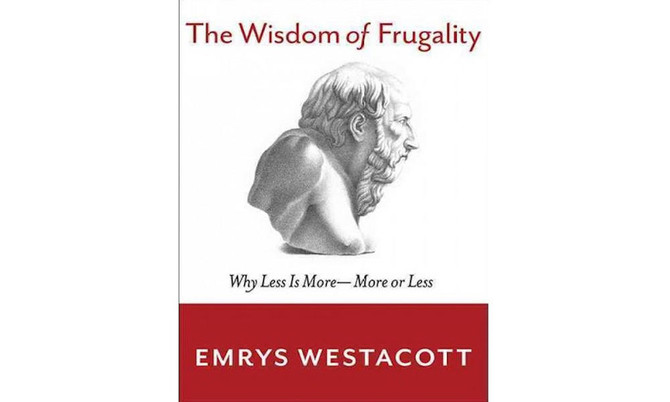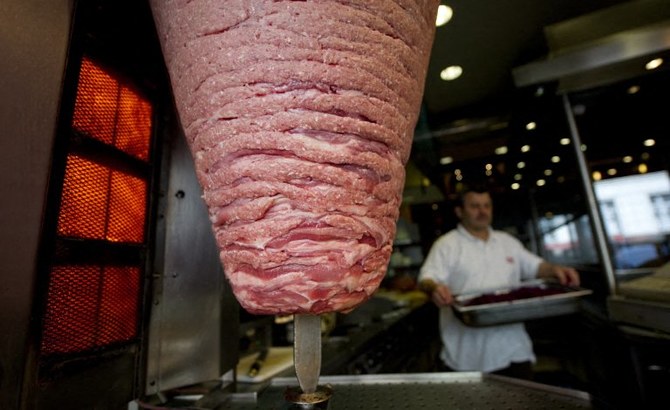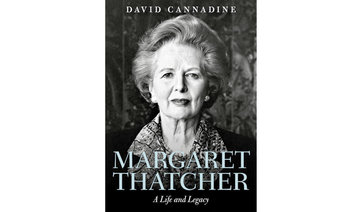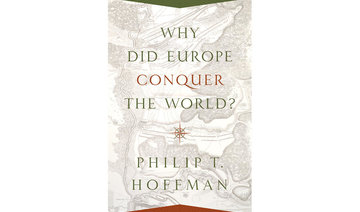Many people associate happiness with wealth. But is it wise to have a taste for luxury? Is it morally or economically sound to incur debt in order to buy things? And is it wrong to be a spendthrift?
Throughout history, thinkers have praised the art of simple living. Frugality was viewed in the past as a smart and dignified activity, which nurtures our ability to reason and become self disciplined.
In this book Emrys Westacott explores the pros and cons of living frugally. He tries to explain why, despite its benefits, many admit they prefer a taste of luxury to the harshness of frugality. Westacott also argues that in view of the environmental problems threatening our planet, it may be finally time to listen and follow those who believe in a simpler way of life.
But what does it mean to live frugally? The concept of thrift and frugality carry in fact many meanings. One of them is the idea of fiscal prudence mostly associated with Benjamin Franklin. A self-made man, at his death, he was celebrated as one of the greatest men of his time. An entrepreneur, politician, diplomat, scientist, inventor, philanthropist and a writer, Franklin mentioned in his autobiography the importance of cultivating 13 specific virtues. The fifth on his list refers to frugality: “Make no expense but to do good to others or yourself; i.e. waste nothing.” Franklin warns especially against the dangers of debt, which he says “exposes a man to confinement, and a species of slavery to his creditors.” Franklin also gave us another good piece of advice: “Beware of little expenses, a small leak can sink a ship.” Some people like Oscar Wilde believed the opposite: “The only thing that can console one for being poor is extravagance.” And indeed, Oscar Wilde lived as he preached, above his means. He died impoverished in a hotel in Paris.
Living cheaply brings to mind a lifestyle using few resources like that of Diogenes, a 4th century Greek philosopher who believed that material goods had little or no value especially when compared with simple pleasures. During his famous encounter with Alexander the Great, when the latter asked him what he could do for him, Diogenes replied: “Don’t block my sunlight!” Enjoying the sun is a pleasure.
What people considered necessary in ancient Greece has little in common with 21st century basic needs such as electricity, running water, central heating, air conditioning, a smartphone and an Internet connection. However, some communities like the Amish prefer not to use modern technology. The Amish work toward communal rather than individual well-being and self-sufficiency. They farm without tractors because they can rely on each other’s help. But then we can argue that in some ways, technology can help us become more self-sufficient like when we use a washing machine instead of having servants.
However, the desire for riches can reach a stage when one is never satisfied. One is so easily caught in a vicious circle of always wanting more. There are examples of very rich people who instead of becoming more generous become increasingly mean. This was the case of Hetty Green, known as the witch of Wall Street. At the time of her death in 1916, she was the richest woman in the world and yet such a miser. She insisted that only the dirty hems of her dresses should be washed to save soap.
Seneca, Diogenes and Benjamin Franklin would be disappointed if they lived in today’s consumer society. People are more than ever eager to make money and willing to live beyond their means.
According to the Pew Research Center, 64 percent of Americans aged between 18 and 24 said that becoming rich is their most important goal in life. A Gallup Poll in 2012 found that the same percentage of Americans wanted to become rich, which is the reason why in 2010 US lottery ticket sales totaled $58 billion.
However, “Wealth can also be less than the blessing it is expected to be when its distribution is highly unequal... among wealthy societies, those where income inequality is greater suffer more from a variety of social ills, including higher rates of physical illness, mental illness and violence, along with lower levels of education, social mobility and trust,” wrote Westacott. But in countries where economic and social inequalities are less pronounced like in Denmark and Costa Rica there are higher levels of happiness. Denmark’s high standard of living, decent health care, education for all and a fair distribution of wealth contribute to the happiness of the Danish people. But does wealth make you happy? A consensus has emerged among social scientists that people living in poverty tend to be significantly less happy than those living above the poverty line.
However, when a certain level of comfort and security is attained, more wealth will not enhance one’s feeling of happiness.
This satiation level is said to be around $75,000, which means that increasing the number and quality of pleasurable experiences does not make one happier. “It seems that our culture is still torn between accepting acquisitiveness as a necessary condition of economic growth and denouncing it as an undesirable character trait that bespeak false values and encourage unethical conduct” wrote Westacott.
This brings us to the pros and cons of extravagance, one of the most interesting chapters of the book. The concept of extravagance means going beyond what is wise. Although few people would defend the idea of living beyond one’s means, capitalism constantly encourages us to buy on credit and capitalism also persuades us that “to be an enthusiastic consumer is to be a good citizen: that consumerism is a form of patriotism.” This was the case after World War II when buying American-made goods was considered a patriotic action to rebuild the country.
Rudy Giuliani, the former mayor of New York City, reiterated the same idea after the 9/11 terrorist attacks in the US. He declared in a radio interview: “There is a way everybody can help us, New York and everybody all over the country. Come here and spend money, just spend a little money.” And even Newsweek made a similar appeal following the 2008 recession under the headline “Stop Saving Now!”
How do we feel about the way rich people behave? Do we approve of Paris Hilton, who had a house that was modeled on her own mansion built for her dog at a cost of $325,000, and the pop star Bono who while attending a fund-raising event in Italy had an urge to wear a particular hat. He had it flown from Ireland at a cost of $1,700.
Some rich people think that we might feel envious of such a behavior but on the other hand, this extravagance encourages others to act in the same way. The top salaries and bonuses given to the CEOs of the world’s biggest companies push other people lower down the ladder to demand a rise in their salaries. The extravagant lifestyle of rich people gives birth to a materialistic culture, which encourages a disparaging individualism as well as a desire for personal wealth. Yet one can also argue that extravagance is economically beneficial since one person’s extravagance is another person’s income.
Spending money on luxury goods creates jobs, which enables those employed to earn more and spend more and this in turn stimulates the economic activity. Most of the palaces, gardens and museums that tourists visit today were built thanks to the generosity of enlightened monarchs and well-intentioned philanthropists combined with the government’s efforts to spend great sums of money to maintain them.
Interestingly enough the food, clothes, computers, smartphones, cars and kitchen equipment, to name but a few, are not very much different to those owned by rich people. No one will be impressed by a new iPad. To arouse people’s interest, you need to mention that you had breakfast in Paris, lunch in New York and dinner in Rio de Janeiro!
According to psychologists, spending our money on holidays, concerts, and social gatherings makes us happier than buying material things. “We quickly adapt to having the new stuff, whereas good memories remain a continuing source of pleasure,” wrote Westacott.
Showing off one’s wealth is still viewed as an act of vulgarity, and people who live beyond their means are considered foolish, but rich people who spend their money on a worthwhile project can genuinely be considered virtuous.
Paradoxically, some of the same factors that have lessened the appeal of frugality are also responsible for sparking an interest in the ideals of a simple life.
Life nowadays is characterized by constant change and movement, which triggers complexity, instability and confusion. This creates a feeling of nostalgia for a time when life was simpler. Bob Dylan, incidentally, captured this sense of loss in “Dream,” a wonderful song where he looks back on the easy-going innocence of his teenage years “It was all that easy to tell wrong from right.” Dylan realizes that simple issues have now become so complex. The singer is ready to renounce material wealth and return to the simple life he had, but he knows that is a wishful dream.
This nostalgia for more peaceful times is also felt in China where the most popular art hanging in restaurants and sold to tourists represents pristine landscapes symbolizing peace, serenity and harmony.
This longing for another lifestyle is manifesting itself in Europe in the form of the Slow Movement, a desire to fight the fast pace of life.
Frugal simplicity is critical of consumerism and of the capitalistic values of Wall Street. Though many acknowledge the multiple benefits brought by economic growth, they also criticize the fact that these sources of enjoyment are not distributed equitably; they are not available to everybody.
However, provided that a person’s basic needs are satisfied, “many kinds of life may be fulfilling, including some far removed from the life of frugal simplicity. But that life still has much to recommend it for the values it expresses and the responsibilities it accepts. It remains one of the surest paths to contentment, and there are good reasons to associate it with wisdom,” concludes Westacott.
Westacott sheds light on the conflict between the virtues of a frugal life and the economic imperative for growth. Frugality is a smart and dignified activity, which should not be confused with poverty. Living frugally is essentially soul satisfying and it leads us to a more meaningful way of life.
Book Review: Making a case for living frugally
Book Review: Making a case for living frugally

Meaty issue: German political party calls for €4.90 price cap on doner kebabs

- Die Linke appeals to government as price of national favorite hits €10 in some cities
- Scheme would cost taxpayer about €4bn
LONDON: German political party Die Linke has urged the government to cap the price of a much loved food item — the doner kebab.
The party has proposed providing daily vouchers to households that would limit prices to €4.90 ($5.28) and €2.90 for young people under an initiative known as Donerpreisbremse.
The scheme is projected to cost the government about €4 billion.
Introduced after the Second World War by Turkish immigrants who adapted the dish to suit local tastes, the doner kebab is a national favorite in Germany, with an estimated 1.3 billion consumed annually. But their soaring price has become a hot-button political issue.
Die Linke said the cost of a doner kebab had reached €10 in some cities, from €4 just two years ago.
“For young people right now it is an issue as important as where they will move when they leave home,” said Hanna Steinmuller, a lawmaker with the Greens party.
“I know it’s not an everyday issue for many people here … but I think as voter representatives we are obliged to highlight these different perspectives.”
German Chancellor Olaf Scholz was famously confronted by a voter last year who demanded he “speak with Putin … I’m paying €8 for a doner.”
With public pressure mounting, Scholz recently acknowledged on social media that “everywhere I go, mostly by young people, I get asked if there should be a price cap for doner kebabs.”
Despite the appeals, the chancellor rejected the proposal, citing the impracticality of price controls in a free market economy.
Despite its humble origins as a street food, the doner kebab has become an unexpected point of political focus.
Last month, German President Frank-Walter Steinmeier sparked controversy when on a visit to Turkiye he gifted 60 kg of kebab meat from Berlin to Istanbul in what some called a clumsy attempt to symbolize the strong cultural ties between the two nations.
A 98-year-old in Ukraine walked miles to safety from Russians, with slippers and a cane

- Describing her journey, the nonagenarian said she had fallen twice and was forced to stop to rest at some points, even sleeping along the way before waking up and continuing her journey
KYIV, Ukraine: A 98-year-old woman in Ukraine who escaped Russian-occupied territory by walking almost 10 kilometers (6 miles) alone, wearing a pair of slippers and supported by a cane has been reunited with her family days after they were separated while fleeing to safety.
Lidia Stepanivna Lomikovska and her family decided to leave the frontline town of Ocheretyne, in the eastern Donetsk region, last week after Russian troops entered it and fighting intensified.
Russians have been advancing in the area, pounding Kyiv’s depleted, ammunition-deprived forces with artillery, drones and bombs.
“I woke up surrounded by shooting all around — so scary,” Lomikovska said in a video interview posted by the National Police of Donetsk region.
In the chaos of the departure, Lomikovska became separated from her son and two daughters-in-law, including one, Olha Lomikovska, injured by shrapnel days earlier. The younger family members took to back routes, but Lydia wanted to stay on the main road.
With a cane in one hand and steadying herself using a splintered piece of wood in the other, the pensioner walked all day without food and water to reach Ukrainian lines.
Describing her journey, the nonagenarian said she had fallen twice and was forced to stop to rest at some points, even sleeping along the way before waking up and continuing her journey.
“Once I lost balance and fell into weeds. I fell asleep … a little, and continued walking. And then, for the second time, again, I fell. But then I got up and thought to myself: “I need to keep walking, bit by bit,’” Lomikovska said.
Pavlo Diachenko, acting spokesman for the National Police of Ukraine in the Donetsk region, said Lomikovska was saved when Ukrainian soldiers spotted her walking along the road in the evening. They handed her over to the “White Angels,” a police group that evacuates citizens living on the front line, who then took her to a shelter for evacuees and contacted her relatives.
“I survived that war,’ she said referring to World War II. “I had to go through this war too, and in the end, I am left with nothing.
“That war wasn’t like this one. I saw that war. Not a single house burned down. But now – everything is on fire,” she said to her rescuer.
In the latest twist to the story, the chief executive of one of Ukraine’s largest banks announced on his Telegram channel Tuesday that the bank would purchase a house for the pensioner.
“Monobank will buy Lydia Stepanivna a house and she will surely live in it until the moment when this abomination disappears from our land,” Oleh Horokhovskyi said.
Amazon Purr-rime: Cat accidentally shipped to online retailer

- Galena was found safe by a warehouse worker at an Amazon center after vanishing from her home in Utah
LOS ANGELES: A curious cat that sneaked into an open box was shipped across the United States to an Amazon warehouse after its unknowing owners sealed it inside.
Carrie Clark’s pet, Galena, vanished from her Utah home on April 10, sparking a furious search that involved plastering “missing” posters around the neighborhood.
But a week later, a vet hundreds of miles (kilometers) away in Los Angeles got in touch to say the cat had been discovered in a box — alongside several pairs of boots — by a warehouse worker at an Amazon center.
“I ran to tell my husband that Galena was found and we broke down upon realizing that she must have jumped into an oversized box that we shipped out the previous Wednesday,” Clark told KSL TV in Salt Lake City.
“The box was a ‘try before you buy,’ and filled with steel-toed work boots.”
Clark and her husband jetted to Los Angeles, where they discovered Amazon employee Brandy Hunter had rescued Galena — a little hungry and thirsty after six days in a cardboard box, but otherwise unharmed.
“I could tell she belonged to someone by the way she was behaving,” said Hunter, according to Amazon.
“I took her home that night and went to the vet the next day to have her checked for a microchip, and the rest is history.”
What did people eat before agriculture? New study offers insight

- Analysis of forms — or isotopes — of elements including carbon, nitrogen, zinc, sulfur and strontium in these remains indicated the type and amount of plants and meat they ate
WASHINGTON: The advent of agriculture roughly 11,500 years ago in the Middle East was a milestone for humankind — a revolution in diet and lifestyle that moved beyond the way hunter-gatherers had existed since Homo sapiens arose more than 300,000 years ago in Africa.
While the scarcity of well-preserved human remains from the period preceding this turning point has made the diet of pre-agricultural people a bit of a mystery, new research is now providing insight into this question. Scientists reconstructed the dietary practices of one such culture from North Africa, surprisingly documenting a heavily plant-based diet.
The researchers examined chemical signatures in bones and teeth from the remains of seven people, as well as various isolated teeth, from about 15,000 years ago found in a cave outside the village of Taforalt in northeastern Morocco. The people were part of what is called the Iberomaurusian culture.
Analysis of forms — or isotopes — of elements including carbon, nitrogen, zinc, sulfur and strontium in these remains indicated the type and amount of plants and meat they ate. Found at the site were remains from different edible wild plants including sweet acorns, pine nuts, pistachio, oats and legumes called pulses. The main prey, based on bones discovered at the cave, was a species called Barbary sheep.
“The prevailing notion has been that hunter-gatherers’ diets were primarily composed of animal proteins. However, the evidence from Taforalt demonstrates that plants constituted a big part of the hunter-gatherers’ menu,” said Zineb Moubtahij, a doctoral student in archaeology at the Max Planck Institute for Evolutionary Anthropology in Germany and lead author of the study published on Monday in the journal Nature Ecology & Evolution.
“It is important as it suggests that possibly several populations in the world already started to include substantial amount of plants in their diet” in the period before agriculture was developed, added archeogeochemist and study co-author Klervia Jaouen of the French research agency CNRS.
The Iberomaurusians were hunter-gatherers who inhabited parts of Morocco and Libya from around 25,000 to 11,000 years ago. Evidence indicates the cave served as a living space and burial site.
These people used the cave for significant portions of each year, suggesting a lifestyle more sedentary than simply roaming the landscape searching for resources, the researchers said. They exploited wild plants that ripened at different seasons of the year, while their dental cavities illustrated a reliance on starchy botanical species.
Edible plants may have been stored by the hunter-gatherers year-round to guard against seasonal shortages of prey and ensure a regular food supply, the researchers said.
These people ate only wild plants, the researchers found. The Iberomaurusians never developed agriculture, which came relatively late to North Africa.
“Interestingly, our findings showed minimal evidence of seafood or freshwater food consumption among these ancient groups. Additionally, it seems that these humans may have introduced wild plants into the diets of their infants at an earlier stage than previously believed,” Moubtahij said.
“Specifically, we focused on the transition from breastfeeding to solid foods in infants. Breast milk has a unique isotopic signature, distinct from the isotopic composition of solid foods typically consumed by adults.”
Two infants were among the seven people whose remains were studied. By comparing the chemical composition of an infant’s tooth, formed during the breastfeeding period, with the composition of bone tissue, which reflects the diet shortly before death, the researchers discerned changes in the baby’s diet over time. The evidence indicated the introduction of solid foods at around the age of 12 months, with babies weaned earlier than expected for a pre-agricultural society.
North Africa is a key region for studying Homo sapiens evolution and dispersal out of Africa.
“Understanding why some hunter-gatherer groups transitioned to agriculture while others did not can provide valuable insights into the drivers of agricultural innovation and the factors that influenced human societies’ decisions to adopt new subsistence strategies,” Moubtahij said.
Palestinian prisoner in Israel wins top fiction prize

- The mask in the novel’s title refers to the blue identity card that Nur, an archaeologist living in a refugee camp in Ramallah, finds in the pocket of an old coat belonging to an Israeli
ABU DHABI: Palestinian writer Basim Khandaqji, jailed 20 years ago in Israel, won a prestigious prize for Arabic fiction on Sunday for his novel “A Mask, the Color of the Sky.”
The award of the 2024 International Prize for Arabic Fiction was announced at a ceremony in Abu Dhabi.
The prize was accepted on Khandaqji’s behalf by Rana Idriss, owner of Dar Al-Adab, the book’s Lebanon-based publisher.
Khandaqji was born in the Israeli-occupied West Bank city of Nablus in 1983, and wrote short stories until his arrest in 2004 at the age of 21.
He was convicted and jailed on charges relating to a deadly bombing in Tel Aviv, and completed his university education from inside jail via the Internet.
The mask in the novel’s title refers to the blue identity card that Nur, an archaeologist living in a refugee camp in Ramallah, finds in the pocket of an old coat belonging to an Israeli.
Khandaqji’s book was chosen from 133 works submitted to the competition.
Nabil Suleiman, who chaired the jury, said the novel “dissects a complex, bitter reality of family fragmentation, displacement, genocide, and racism.”
Since being jailed Khandaqji has written poetry collections including “Rituals of the First Time” and “The Breath of a Nocturnal Poem.”
He has also written three earlier novels.




















